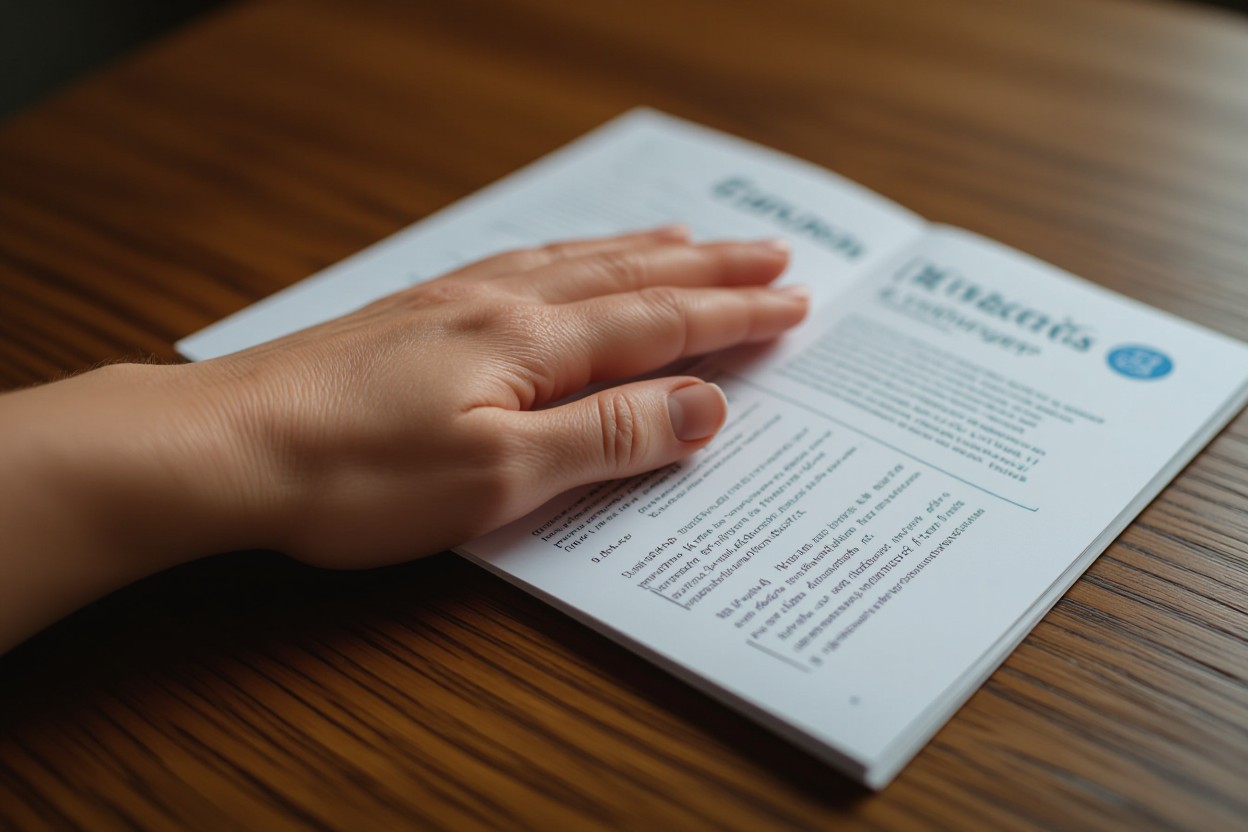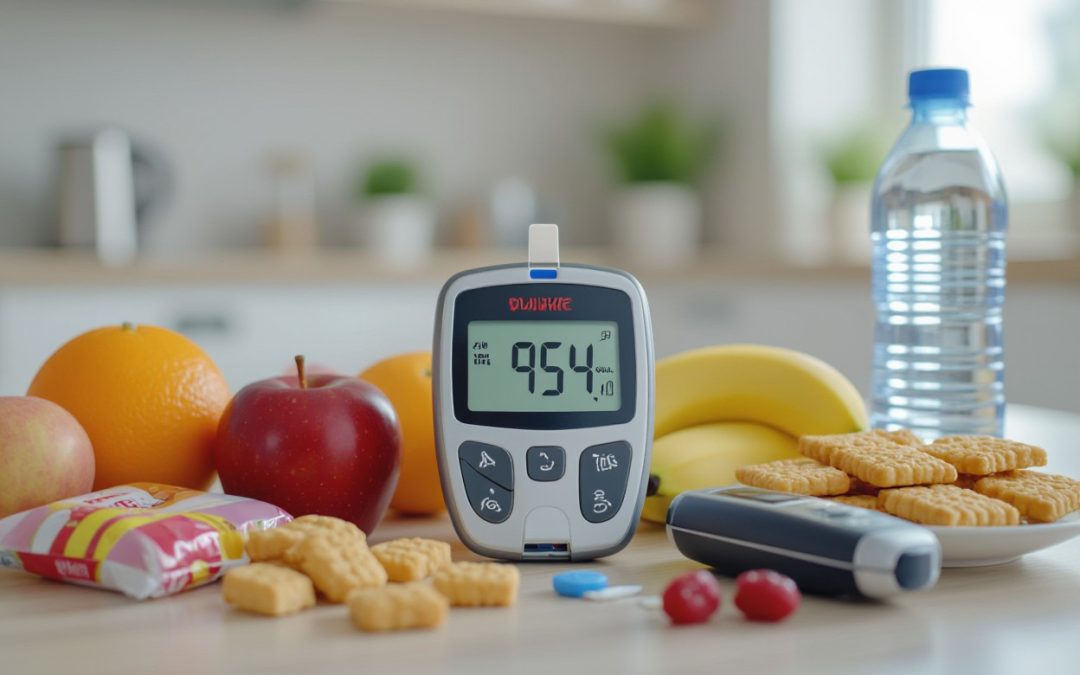There’s a range of symptoms that can indicate when your blood sugar is dangerously high. If you notice changes like excessive thirst, frequent urination, or unexplained fatigue, it’s important to pay attention. These signs can impact your overall health and may lead to serious complications without proper management. By understanding and recognizing the warning signals early, you empower yourself to take control of your health and prevent further issues. In this post, you’ll learn about the nine key indicators that signal high blood sugar levels.
Key Takeaways:
- High blood sugar can cause symptoms such as frequent urination, excessive thirst, unexplained weight loss, and persistent fatigue, which may signal underlying issues requiring attention.
- Complications from elevated blood sugar include blurry vision, slow-healing sores, nerve damage resulting in tingling or numbness, and increased risk of infections like yeast infections and gum disease.
- Monitoring blood sugar levels appropriately based on individual health needs and medical advice is vital for managing type 2 diabetes and maintaining overall health.
Uncommon Thirst and Frequent Urination
Unusual thirst and increased urination often signal that your blood sugar is running too high. When glucose levels in your bloodstream rise, your kidneys work harder to filter out the excess sugar, leading to more frequent trips to the bathroom. This process also causes dehydration, prompting you to drink more fluids. If you find yourself constantly reaching for water and needing the restroom more than usual, these can be early warning signs that your blood sugar needs immediate attention.
The Connection Between Dehydration and High Blood Sugar
High blood sugar causes fluids to shift from your cells into your bloodstream to dilute the sugar, which can leave your body dehydrated at the cellular level. This fluid imbalance triggers intense thirst and encourages higher fluid intake. Additionally, your kidneys excrete the excess sugar through urine, further draining your body of water. As a result, dehydration becomes a common consequence of elevated blood sugar, intensifying symptoms like dry mouth, fatigue, and dizziness.
How Fluid Imbalance Signals Underlying Issues
Fluid imbalance from high blood sugar not only causes typical symptoms but also points to deeper physiological stress. This imbalance affects electrolyte levels and can impair kidney function if elevated glucose remains unchecked. Over time, persistent dehydration may strain your cardiovascular system and complicate diabetes management, worsening complications. Sudden shifts in fluid can indicate that your body is struggling to regulate its internal environment, urging a reevaluation of your glucose control strategies.
More detailed analysis shows that chronic high blood sugar disrupts your kidneys’ ability to retain water and electrolytes, which may lead to increased blood pressure and swelling. This ongoing fluid disruption undermines cellular function and can worsen insulin resistance, creating a feedback loop that elevates glucose levels further. By closely monitoring your hydration and urinary habits, you gain insight into these hidden imbalances and can adjust your treatment plan with your healthcare provider accordingly.
Unexplained Weight Changes: Hunger and Loss
You might notice an unusual combination of increased hunger paired with unexpected weight loss—a confusing but telling sign of high blood sugar. Despite eating more than usual, your body struggles to use glucose effectively for energy due to insulin resistance or deficiency. This inability forces your cells to burn fat and muscle for fuel instead, leading to significant weight loss even amid a growing appetite. Along with changes in weight, you may also experience muscle weakness and fatigue, reflecting how your body’s metabolism is being disrupted.
Why Increased Appetite Can Be Misleading
When your blood sugar is elevated, glucose isn’t reaching your cells efficiently, which triggers signals of hunger even though your body is already flooded with sugar. This causes you to eat more, but since glucose remains unabsorbed, the feeling of starvation persists. The increased appetite is actually a misleading response to cellular starvation, not a true need for more calories, making it easy to misinterpret the symptom as just overeating.
Understanding Weight Loss Despite Increased Caloric Intake
High blood sugar causes your body to become resistant to insulin, preventing glucose from entering cells where it’s needed for energy. With cells starving, your body compensates by breaking down fat and muscle tissue to meet energy demands, resulting in weight loss. This catabolic state can be accelerated by elevated blood sugar’s impact on metabolism and hormone regulation, causing rapid, unintended weight loss even as you consume more calories.
The weight loss often observed with high blood sugar isn’t just about burning fat—it includes muscle loss too, weakening your physical strength and increasing risks like falls. Studies show that individuals with poorly controlled diabetes can lose 5-10% of lean body mass within just a few months if hyperglycemia continues unchecked. This highlights how unchecked blood sugar levels can silently erode your body’s energy reserves despite an increased appetite and food intake.
The Weight of Fatigue: Constant Tiredness Explained
Persistent fatigue often signals that your blood sugar is out of balance. When glucose isn’t properly processed, your body struggles to convert food into usable energy, leaving you feeling drained despite rest. This exhaustion isn’t just about needing more sleep — it’s a direct reflection of how high blood sugar disrupts cellular function. Many people with elevated glucose levels report difficulty performing routine tasks, often dismissing the tiredness as normal stress or aging, when in fact, it’s your body’s alarm to check those levels promptly.
The Energy Drain of High Blood Sugar
High blood sugar impairs your cells’ ability to absorb glucose, meaning your muscles and organs don’t get the fuel they need. This metabolic disconnect results in a significant drop in energy production. You might notice that even simple activities like climbing stairs or concentrating at work leave you disproportionately exhausted. The body’s inefficient use of glucose forces it to rely on other energy sources, which are less effective and contribute to that overwhelming feeling of tiredness.
Impacts on Daily Life and Productivity
When fatigue persists, your focus, motivation, and overall productivity take hits. Tasks that once felt manageable may seem overwhelming, and mental fog can make decision-making difficult. This isn’t only frustrating — it can affect your safety, especially if you’re driving or operating machinery. The fatigue linked to high blood sugar is not just physical but cognitive, disrupting your ability to function optimally throughout the day.
Beyond the immediate sense of tiredness, this energy deficit often leads to a cycle of inactivity, where you may skip exercise or other activities that could help regulate blood sugar, inadvertently worsening the problem. Studies show that persistent fatigue associated with high glucose contributes to reduced work efficiency and social withdrawal, emphasizing how much uncontrolled blood sugar can permeate every facet of your life. Addressing this symptom early is a step toward regaining both vitality and control.
Blurry Vision and Headaches: Perceptual Disturbances
Elevated blood sugar can distort your vision and trigger persistent headaches. High glucose levels cause swelling in the lens of your eye, altering its curvature and impairing your ability to focus sharply. This blurriness may interfere with daily activities, like reading or driving, increasing your risk of accidents. Headaches often accompany these visual changes due to fluctuating blood sugar affecting brain function and nerve signaling. If you notice these symptoms persisting, they can be a sign that your blood sugar isn’t well controlled and should be evaluated promptly.
How High Blood Sugar Affects Eye Health
Excess glucose in your bloodstream leads to osmotic changes within the eye’s lens cells, causing them to swell and change shape. This swelling disrupts the eye’s normal ability to bend light properly, resulting in blurred vision. Over time, high blood sugar can contribute to diabetic retinopathy by damaging the retinal blood vessels, potentially causing permanent vision loss. Maintaining stable blood sugar helps preserve eye health and prevents progressive damage to these sensitive structures.
The Correlation Between Vision Problems and Head Pain
When your vision blurs due to high blood sugar, your brain and eyes work harder to focus and interpret images, which can strain muscles and nerves. This added strain often leads to tension headaches or migraines. Furthermore, fluctuations in glucose levels affect neurotransmitter balance and blood flow in your brain, intensifying headache severity. These interconnected symptoms are indicators of systemic imbalance caused by unregulated high blood sugar, signaling that intervention is needed to stabilize your levels.
Diving deeper, the link between blurry vision and headache pain lies in the nervous system’s response to metabolic stress. As blood sugar levels rise, imbalances disrupt normal neural activity, increasing sensitivity to pain and light. The eye strain compounds this by forcing constant adjustment and refocusing, exhausting ocular muscles. Studies show that people with uncontrolled hyperglycemia experience headaches more frequently and with greater intensity, partly due to these overlapping mechanisms. Watching for this pairing of symptoms can provide valuable insight into your blood sugar management status.
Sluggish Healing: The Consequences of Wound Care
When your blood sugar levels remain elevated, the healing process slows dramatically. High glucose impairs your immune response and reduces blood flow, especially to the lower extremities, leaving wounds open longer and increasing the chance for infections. What might start as a small cut or blister can quickly turn into a serious issue if not addressed promptly. You might find yourself dealing with sores or ulcers that just won’t heal, highlighting the importance of monitoring any skin injuries carefully.
Delayed Recovery: Causes and Effects
Elevated blood sugar disrupts cell function and reduces collagen production, both vital for tissue repair. This delay means your body struggles to close wounds efficiently, making you vulnerable to chronic ulcers. Additionally, poor circulation limits oxygen and nutrient delivery to damaged tissues, further prolonging recovery. The longer wounds stay open, the higher your risk of complications affecting mobility and overall health.
Recognizing the Risk of Infections and Complications
Open wounds paired with high blood sugar create an ideal environment for bacteria to thrive. You’re more likely to develop infections such as cellulitis or abscesses, which can escalate quickly without treatment. In severe cases, infections can spread to bones or necessitate surgery, including amputation. Regularly inspecting your skin and seeking medical advice at the first sign of redness, swelling, or pus can prevent these dangerous outcomes.
Infections stemming from slow-healing wounds are often resistant to standard treatments due to impaired immune defenses caused by hyperglycemia. One study showed that diabetic foot ulcers affect nearly 15% of people with diabetes during their lifetime, with infections leading to approximately 85% of subsequent amputations. Recognizing these risks early allows you to take steps—such as maintaining optimal blood sugar control and practicing diligent wound care—to avoid serious complications and preserve function and quality of life.

Neuropathy Symptoms: Tingling and Numbness Explained
Tingling and numbness in your hands or feet often signal diabetic neuropathy, a common result of prolonged high blood sugar damaging your nerves. This sensation can range from mild prickling to severe numbness, affecting your balance and daily activities. You might also experience weakness or sharp pain, especially at night, which interferes with sleep. Detecting these symptoms early allows you to manage blood sugar more effectively and potentially slow nerve damage progression.
The Impact of High Sugar on Nerve Health
Elevated blood sugar disrupts nerve function by damaging the blood vessels that supply oxygen and nutrients, leading to nerve fiber deterioration. Over time, this causes your nerves to become less sensitive, resulting in tingling, numbness, or burning sensations. In some cases, high sugar levels trigger inflammatory responses that further impair nerve signaling. Controlling your blood sugar minimizes ongoing damage and supports nerve repair.
Long-Term Consequences of Diabetic Neuropathy
Unchecked neuropathy can lead to serious complications such as foot ulcers, infections, and even amputations due to poor sensation and delayed wound healing. The loss of feeling in your extremities increases injury risk, and if wounds go unnoticed, infections may spread. Chronic pain from nerve damage also impacts your quality of life, interfering with mobility and mental well-being. Early intervention reduces these risks and helps maintain your independence.
For example, studies show nearly 60% of people with diabetic neuropathy develop foot ulcers within 10 years of diagnosis, highlighting the need for vigilant foot care. Regular screening, proper blood sugar management, and protective footwear can significantly lower your risk of severe outcomes. Addressing neuropathy proactively not only prevents complications but also promotes better overall health and daily comfort.

The Skin’s Red Flags: Changes You Should Notice
Your skin often reflects what’s happening inside your body, and certain changes can signal that your blood sugar is running too high. You might observe blisters, persistent dryness, or unusual rashes developing without obvious causes. These skin changes arise because high glucose levels can impair circulation and damage nerves, interfering with your skin’s ability to repair itself. Noticing such symptoms early gives you an advantage in addressing blood sugar issues before they escalate into more serious complications.
Identifying Skin Problems Related to Blood Sugar Levels
High blood sugar can lead to skin conditions like diabetic dermopathy, characterized by light brown, scaly patches, or necrobiosis lipoidica, which causes shiny red or yellow lesions. You may also experience fungal infections presenting as itchy, red areas, commonly in warm, moist folds of skin. Persistent dryness and cracking increase your risk for bacterial infections, especially on your feet. Monitoring these signs can help you catch blood sugar spikes even if other symptoms are subtle or absent.
The Importance of Skin Changes as Warning Signs
Skin changes are not just cosmetic; they serve as important warning signs that your blood sugar may be dangerously high. Slow-healing sores, discoloration, or unexplained rashes often indicate underlying circulation and nerve damage, which can progress rapidly if ignored. Taking notice of these symptoms and seeking care promptly can prevent infections, ulcers, and more severe complications like amputations.
With diabetes affecting an estimated 1 in 10 adults in the U.S., skin manifestations act as a frontline indicator of glycemic control. Studies show that up to 30% of people with diabetes develop some form of skin disorder related to elevated blood sugar. Addressing these early changes by managing your glucose levels reduces the risk of chronic wounds and infections that are difficult to treat. Paying close attention to your skin can therefore be a vital part of maintaining your overall health and preventing more serious outcomes.
Conclusion
Now that you know the 9 signs your blood sugar is too high, you can better recognize when your body is signaling a problem. Paying attention to symptoms like excessive thirst, fatigue, blurred vision, and slow-healing sores helps you take timely action to protect your health. Managing your blood sugar effectively is key to maintaining your overall health and preventing complications. Stay vigilant and consult your healthcare provider if you notice any of these warning signs.


